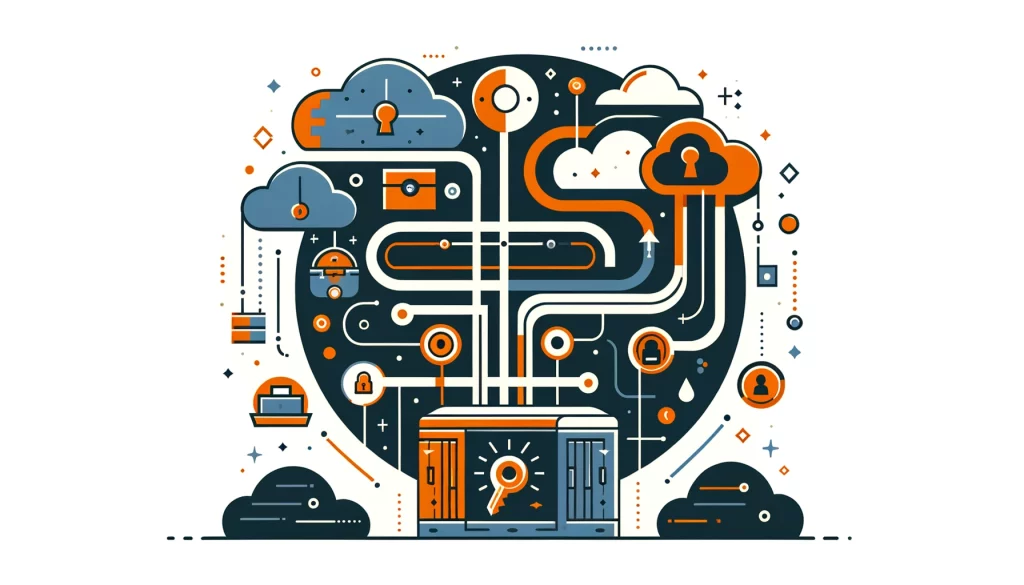
Data Access

As data usage becomes more advanced, so do the risks of data breaches and cyberattacks. To mitigate these threats and ensure the security of sensitive information, companies must prioritize data access control.
This article will discuss how to access resources, the types of access, and ways to protect your organization’s important resources. First, we will cover the basics of accessing data. Next, we will explore the different types of access. Finally, we will provide tips on keeping your important data safe.
Definition of Data Access
Data access is the ability to retrieve, modify, copy, or transfer data in IT systems based on user requests.
It allows users to perform different functions and tasks without the constraints of geolocation or the requirement for data to be at rest or in motion.
Typically, data is stored in databases, data repositories, data warehouses, or data lakes. To see this information, users need to go through security steps set by the organization that owns the data.
Data access plays a pivotal role in effective data governance. Companies must establish well-structured protocols for granting access to different users or employees within the organization.
Security protocols should have various layers and permission levels based on the roles and responsibilities of each person in the company.
Types of Data Access: Random vs. Sequential
When it comes to accessing data stored in a repository or data warehouse, there are two primary methods: random access and sequential access. Understanding the differences between these methods is crucial for optimizing data retrieval and access.
Random Access: A Speedy Solution
Random access is a method that allows users to retrieve data from any location in the storage drive without performing sequential data reading. This approach makes data retrieval much faster, as the data is located in constant time.
If the time needed for sequential reading is longer than the fixed retrieval time limit, random access is the best option. Random access is ideal when the fixed retrieval time limit is lower than the time needed for sequential reading.
Consider a scenario where a sales manager needs to access a specific customer’s purchase history from a vast database.
Random access helps the system find and retrieve specific information quickly. This means it doesn’t have to search through the entire dataset. This saves time and resources.
Sequential Access: A Systematic Approach
Sequential access involves using a seek operation to find the needed data on a storage drive. This method reads data in sequential order, which can burden the resources of the data store.
However, sequential access is generally faster than random access because it completes the task in fewer seek operations.
An HR manager would use sequential access to find employee records in a specific department. They would start from the beginning of the database and read through each record until they find the relevant department.
While this may take longer than random access, it ensures a systematic and thorough search of the data.
Data Access Control: Safeguarding Your Data
Data access control allows organizations to give permissions to users, employees, and third-party users to access company database. This process ensures data security, privacy, and compliance.
These requirements are in line with industry best practices and regulations from standards like GDPR, HIPAA, and NIST.
These regulations mandate companies to conduct audits and quality controls for users with access to sensitive information.
Access control is important to make sure that every user in the organization has the right access. This is done by following the company’s policies and regulations on privacy, security, and compliance.
By implementing data access control, organizations can protect sensitive data by ensuring that only authorized individuals can access and use it, preventing unauthorized access and potential data breaches.
Best Practices for Secure Data Access
While implementing data access control is a crucial step in protecting sensitive data, it alone is not sufficient to keep your data secure. Let’s explore some best practices for ensuring secure access within your organization.
Encrypt Data at Rest and in Transit
Data encryption is one of the most effective ways to enhance data access control. It is essential to encrypt data both when it is at rest and in transit. When data is in transit, it is encrypted before transmission, and the system endpoints are authenticated.
The data is then decrypted once access is granted, and the user retrieves it. For data at rest, the information stored in the warehouse or repository is encrypted, adding an extra layer of security.
Implement Strong Authentication Measures
Maintaining strong and proper authentication for your entire data ecosystem is crucial for effective data access control. Weak measures can leave your systems vulnerable to data theft and breaches.
Implement multi-factor authentication, requiring users to provide multiple forms of identification before granting access to PII. This may include a combination of passwords, security tokens, biometric data, or other unique identifiers.
Establish Network Access Control
Network access control combines endpoint security, user authentication, and network security to prevent unauthorized users and devices from penetrating or compromising a private network.
By ensuring the security of the network, administrators can enforce stricter access control policies more effectively. Implement firewalls, intrusion detection systems, and virtual private networks (VPNs) to monitor and control access to your network resources.
Define Clear Security Policies
Having clear and well-defined security policies is essential for secure access. These policies should govern and protect the access and transmission of information within your organization.
Adopt the principle of least privilege, which dictates that users should only be granted access to functions necessary for their specific roles. Regularly review and update these policies to ensure they remain relevant and effective in the face of evolving security threats.
Real-World Examples
To better understand the importance of secure access, let’s look at some real-world examples.
Healthcare Industry
In the healthcare industry, protecting patient data is of utmost importance. Under HIPAA regulations, healthcare providers must ensure that only authorized personnel can access patient records.
Healthcare organizations can protect patient information by using strict data controls. These controls include role-based access and encryption. They help prevent unauthorized access and breaches.
Financial Services
Financial institutions handle vast amounts of sensitive customer data, including personal identification information and financial records.
To comply with regulations such as the Payment Card Industry Data Security Standard (PCI DSS), these organizations must implement robust data access controls.
This may include using multi-factor authentication for user access, encrypting financial data, and conducting regular security audits to identify and address potential weaknesses.
E-commerce Platforms
E-commerce platforms store and process customer data, including personal information and payment details. To protect this sensitive data, e-commerce companies must implement secure data access practices.
To protect customer data, use SSL encryption when transmitting data. Make sure to regularly update software and security patches. Additionally, establish strict access controls for employees who handle customer information.
Conclusion
Organizations can keep their important data safe from breaches and cyberattacks by learning about data access basics. They should also understand the various types of access and follow best practices for securing sensitive information.
Protecting your company’s data is important. Protecting your data is crucial. You can achieve this by controlling access to the data and encrypting it. Also, it’s important to verify the identity of individuals before granting access to the resources.
Additionally, controlling access to your network and establishing clear security protocols are essential measures to safeguard your data.
With the increasing volume and importance of data, it is crucial for businesses in all industries to prioritize secure data access.
Invest in strong access control measures to protect your company’s sensitive information. This will also help pave the way for a successful, data-driven future.
